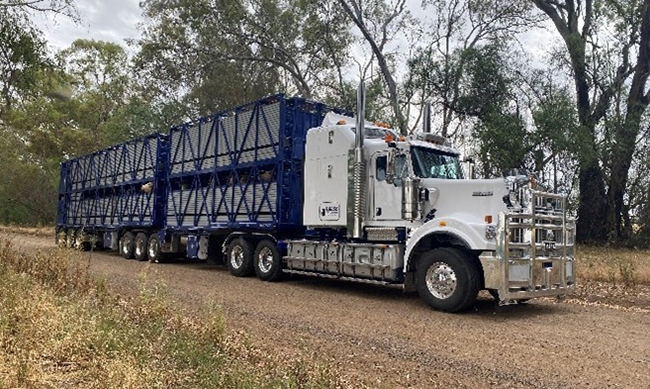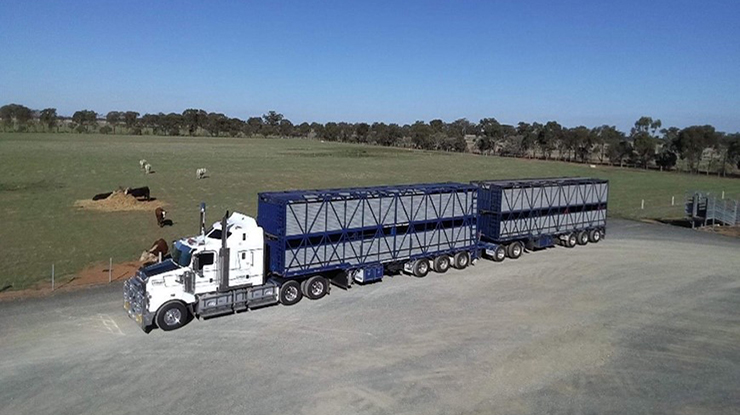 Alina Hawkins, Chief Operating Officer at the Livestock and Rural Transporters Association of Victoria. Image: Alina Hawkins.
Alina Hawkins, Chief Operating Officer at the Livestock and Rural Transporters Association of Victoria. Image: Alina Hawkins.
Why the 48 hours before loading livestock makes all the difference
The 48 hours before loading is critical for successful livestock transport, according to the 2023 Livestock Transport Woman of the Year Alina Hawkins.
Working as the Chief Operating Officer at the Livestock and Rural Transporters Association of Victoria and co-owner of Hawkins Stock Transport, Alina said in her 20 years of livestock transport, the preparation before loading made all the difference.
“You put all the time and care into breeding and managing your livestock, it’s important that care continues in the leadup to transport as well.
“If they are managed well before transporting, it reduces effluent and helps the animals travel better which reduces drama along the way for the driver,” Alina said.
Time in yards key
Cattle should be yarded well in advance of loading and provided good quality hay and clean water, Alina advised.
Weather conditions and length of the intended journey should also be considered for cattle, sheep and goats.
“Sheep and goats should be yarded and fed quality hay, but further considerations of body condition and skin length need to be discussed with your transporter,” Alina said.
“During winter, if goats and old ewes are not taken off water before long journeys, they can excessively urinate early in the journey and are at risk of getting wet and cold.”
In summer, it is recommended to take sheep off water the night before if loading at daylight, but if they’re lighter condition or coming out of a drought, they will need less time off water.
“Liquid supplements are an option to assist drought stock to travel,” Alina said.
The length of wool is an important factor to communicate in terms of penning density as well.
“Penning density guidelines should be considered by all parties loading livestock – things like weight, height, breed, wool length as well as journey route, weather, driving hours and time off water.”

Low stress animal handling
Alina said the welfare of animals in their care is at the forefront of her and other professional operators’ minds.
“Low stress animal handling for me is one of the key points for successful animal welfare.
“Nine times out of 10 you can handle livestock with minimal noise, in good facilities,” Alina said.
Having capable drivers who care for the animals and maintain a good rapport with people is essential, as is reliable equipment and the ability to manage any problems as they arise.
Producers and feedlots with well-maintained yards, good preparation and communication make the process more successful for everyone involved, Alina said.
“From an animal welfare perspective, having well maintained yards and ramps is essential, as well as good access to get the trucks in and out of the property or facility.
“Producers and feedlots that do it really well make the transition from point A to point B much easier and improve animal welfare in transit by 100%.
“As a transporter there is a lot to consider while having livestock in transit and sharing the busy roads with the general public.
“If the livestock are prepared and fit for the intended journey, we can focus on our task in front of us, which is a bonus for us.
“When the producers do their part before we get there, it’s a huge contributor to a successful day,” Alina said.




